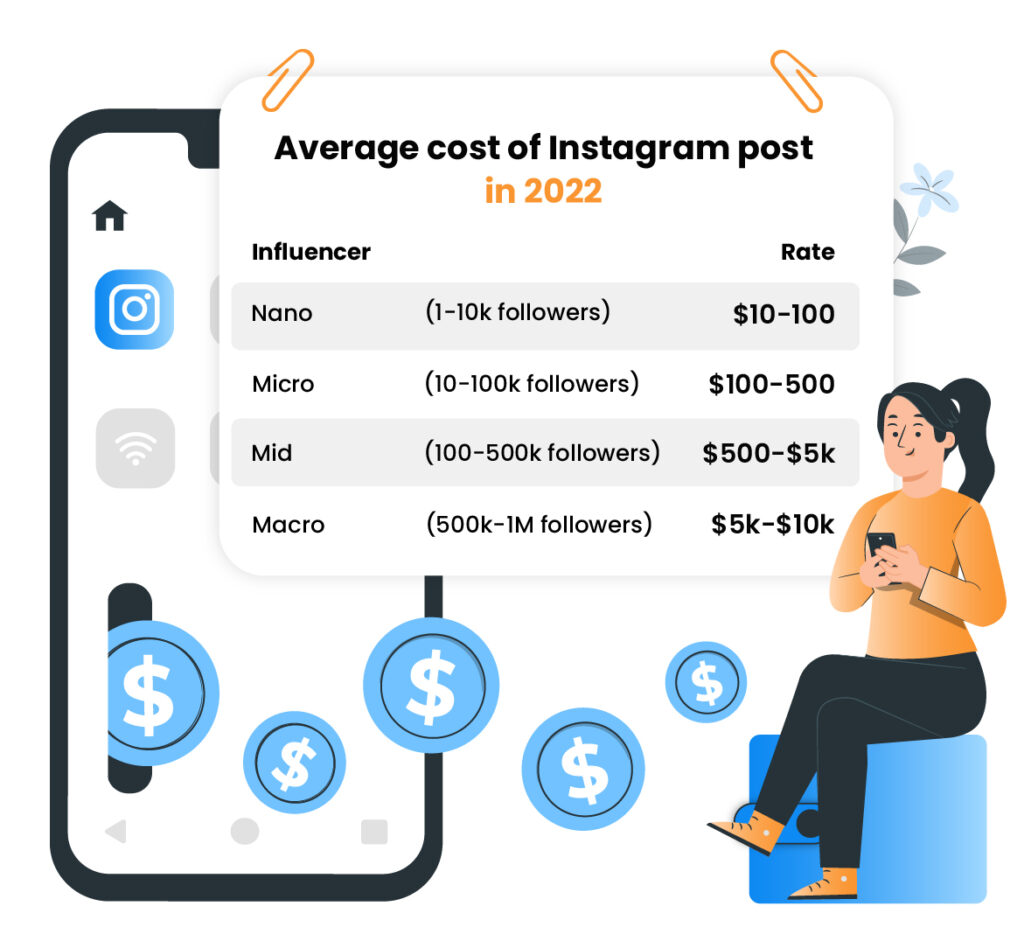The main reason why affiliate marketing is becoming so popular is the general consensus that it is a low-risk and low-cost option. In this article, we will focus on the financial aspects of affiliate marketing. We will share some tips on how much you should pay your affiliates so that both sides (your affiliates and you) are satisfied.
According to BloggingX, 81% of brands and 84% of publishers already use affiliate marketing. But what about affiliate payments? Are all of these vendors and affiliates satisfied with the cost of affiliate marketing and their commissions? What affects their opinions? You will find the answers to these questions (and more!) below.
Conduct research as a starting point
Establishing the right payment amount should be preceded by research. Proposing a fair salary to an affiliate can make a huge difference to your cooperation’s quality, and even be a decisive factor in their decision to work with you. And that is why it’s essential to compare your planned commissions with those of your competitors. Having a reference point will make it much easier for you to set your rates correctly at the beginning of your cooperation.
Remember that there are different payout models, such as PPC and PPS, etc. Not every affiliate will be willing to collaborate using the same payment model. You have to decide if you’re going to look for various affiliates regardless of your preferred payment method, or if you want to unify the payout system for everyone and choose affiliates accordingly.

How much do others pay?
To make your life easier, we checked out some examples of different commissions from various industries. If you operate in one of the sectors mentioned in the article above, you may find some useful benchmarks there.
Technology providers such as Dell or IBM stand by the 1% commission, while Hifi.com pays 5% of each consumer electronic item purchased through an affiliate. When it comes to the big players like Amazon, the company pays 15% for each direct link. Another retailer, real.com, pays its affiliates 8%.
The clothing industry has its own commission standard, too. American Eagle Outfitters offers $0.20 per sale, while Birkenstock pays just 2%. One of the highest commission rates is offered by Henry and June, who pay their affiliates 12% per sale.
The financial services industry has also implemented affiliate marketing, with varying levels and methods of commission payouts. Capital One pays $25 per every newly referred cardmember, while ebank and BestRate pay commissions per click – the former $0.30 and the latter $0.50.
As you can see, even companies from the same industry offer different payment methods and rates. Why is that? Because these businesses and their operating models differ and work towards achieving different goals. So it is up to you to decide on the best commission rate for yourself and your affiliates.
Key factors to take into consideration
When determining the commission amount, you should take four factors into account: competitors’ rates (mentioned above), margins, customer acquisition costs, and discounts/promotions. Since we have already covered competition rates above, let’s move on to margins.
Margins
It is the margin that largely determines how much you earn, and it is the same for your affiliates. If your profit margin is 15%, it is logical that you cannot offer a higher commission than that, like 20%, because you’d be losing money. So how do you choose the right commission percentage?
Firstly it should be lower than your profit margin, and secondly, it would be a good idea to define the minimum, median, and average gross profit margins for each product or item category, if not both. If you want to do this in detail, consider how complex your program is – how many products are advertised by affiliates and how often.

The next step should be to specify factors that might affect your net profit margin: the average return rate, promotional offers, or fees, etc. Once you know these values, you are one step closer to knowing your budget’s limits and what amounts of commissions you can afford to offer.
Customer acquisition costs
Regardless of your acquisition costs, you must keep earning money. Analyze your bottom line and decide whether you can afford higher costs.
Let’s assume that you can dedicate about 15% of your outlay to commissions. This does not mean that this must be the final amount of commission for your affiliates. Keep in mind that there are other customer acquisition channels you can leverage, and affiliate marketing shouldn’t be the most expensive one. Besides, it’s good to have buffer money on hand.
Remember to differentiate payments depending on the individual experience, engagement, and results of each affiliate. In this case, the Commission Groups offered by Post Affiliate Pro can come in handy. It will be much easier for you to differentiate your affiliates’ payments thanks to this feature. You can create commission groups based on product categories, performance, or junior and senior positions. With this feature, you can easily diversify payments and ensure that every affiliate will receive a fair salary.
Discounts and promotions
Many merchants forget about it, but the costs of promotional actions also need to be included. If your shop offers, e.g., a 5% discount off of an initial purchase, you have to include this discount in your calculations. Do you add free samples to orders? How often do you organize sales promotions? Think about your fiscal year in terms of promotions and discounts, and think about your affiliates’ roles in such initiatives.

Don’t start too high
We know you want to encourage affiliates to do business with you, but offering commissions that are too high can actually throw people off. Why? The average person wants to develop their skills at work and receive higher pay over time. If you start by offering suspiciously “too good to be true” terms to affiliates, there will be no room to reward good performance with pay rises. Eventually, affiliates will be dissatisfied with their financial compensations and the quality of their work may deteriorate due to a lack of motivation. Alternatively, they will simply leave your affiliate program.
Bonuses are another scenario to be considered. It is worth rewarding those who deserve it? You should establish a bonus system for your affiliates, so you need a buffer for this. You won’t have one if you propose maximum commissions to your affiliates from the start. Sometimes less is more.
What payment methods can you choose from?
We already mentioned PPS and PPC payout methods. There is one more payout method to complete the big three, which is PPL. What’s the difference between them?
- Pay Per Sale (PPS) – This is one of the most frequently chosen methods. It is based on the idea that the merchant pays an affiliate the agreed commission amount each time a consumer buys a product following the affiliate’s recommendation (for example, when clients place orders using that affiliate’s unique discount code).
- Pay Per Click (PPC) – The merchant pays affiliates for every click on a banner or ad. But what kind of click? The affiliate must be convincing enough to encourage customers to visit the seller’s website. Website traffic is the basis for measuring the effectiveness of this method.
- Pay Per Lead (PPL) – PPL is the most complex payout model. With this method, the affiliate commission depends on conversions. The affiliate has to convince customers to visit the seller’s website and to take the desired action, e.g. sign up for a newsletter or create an account.
If you want to learn more about payment methods, you can read this article. You can also find descriptions of other less-popular payment methods.
Final thoughts
This article is a set of guidelines and tips that should help you establish commissions with your affiliates. There are many methods to choose from, and we can’t tell you exactly how much you should pay your affiliates to keep everyone happy. Why? Because every business is different. There is no one size fits all answer. However, we hope that with these tips you will find the right commission amount and type of payment that makes your affiliates feel appreciated and keeps your business thriving.
Frequently Asked Questions
What is an event in affiliate marketing?
An event in affiliate marketing refers to a specific action or occurrence that results in a commission being earned by the affiliate. This could include a sale, a click, a lead generation, or any other predetermined action that results in a conversion. Tracking and monitoring these events is crucial in affiliate marketing to ensure that affiliates are properly compensated for their efforts.
What is an event in affiliate marketing?
An event in affiliate marketing refers to a specific action or occurrence that results in a commission being earned by the affiliate. This could include a sale, a click, a lead generation, or any other predetermined action that results in a conversion. Tracking and monitoring these events is crucial in affiliate marketing to ensure that affiliates are properly compensated for their efforts.
Share this article
9 affiliate marketing tools that’ll help you run your affiliate program
Discover 9 essential tools to supercharge your affiliate marketing program! From visual content creation with Visme to comprehensive management with Post Affiliate Pro and audience insights via Smartlook, these tools will boost your sales and refine your strategy. Dive in to maximize your affiliate success!
Discover Post Affiliate Pro's flexible pricing plans tailored to fit your business needs, with options for Pro, Ultimate, and Network packages. Enjoy a free trial with no credit card required, no setup fees, and the freedom to cancel anytime. Benefit from features like unlimited affiliates, advanced reporting, customizable interfaces, and lifetime support. Save up to 20% with annual billing and take advantage of more than 220 integrations. Perfect for businesses seeking to enhance their affiliate marketing efforts. Visit now to find the ideal plan for you!
How to choose affiliate software
Discover how to choose the best affiliate software with Post Affiliate Pro's comprehensive guide. Learn about essential features like tracking, fraud prevention, and customizable commission types, all designed to optimize your affiliate programs. Ensure seamless operations with easy setup, mobile access, and outstanding support to save time and build trust with affiliates. Visit our guide to make informed decisions and boost your affiliate marketing success!
A guide to different types of affiliate tracking
Explore the comprehensive guide on affiliate tracking methods like cookie, postback URL, and IP tracking to optimize your affiliate marketing strategy. Learn how Post Affiliate Pro's advanced software ensures precise tracking, maximizes sales, and provides exceptional support for seamless affiliate cooperation. Unlock your brand's potential with cutting-edge tracking solutions today!
How To Find Affiliates to Sell Your Products
Discover over 10 successful strategies for finding high-quality affiliates in 2024 to boost your product sales. Learn to leverage influencers, join affiliate networks, and enhance your reach through SEO and social media. Maximize revenue with transparency and ongoing monitoring in your affiliate marketing program.
The 9 Best payment processors for affiliate marketing
Discover the 9 best payment processors for affiliate marketing that ensure secure, flexible, and rapid commission payments. Boost your eCommerce sales by selecting a reliable processor to attract top affiliates and enhance your program. Explore our comprehensive guide to choosing the right payment processor for your affiliate marketing success.












